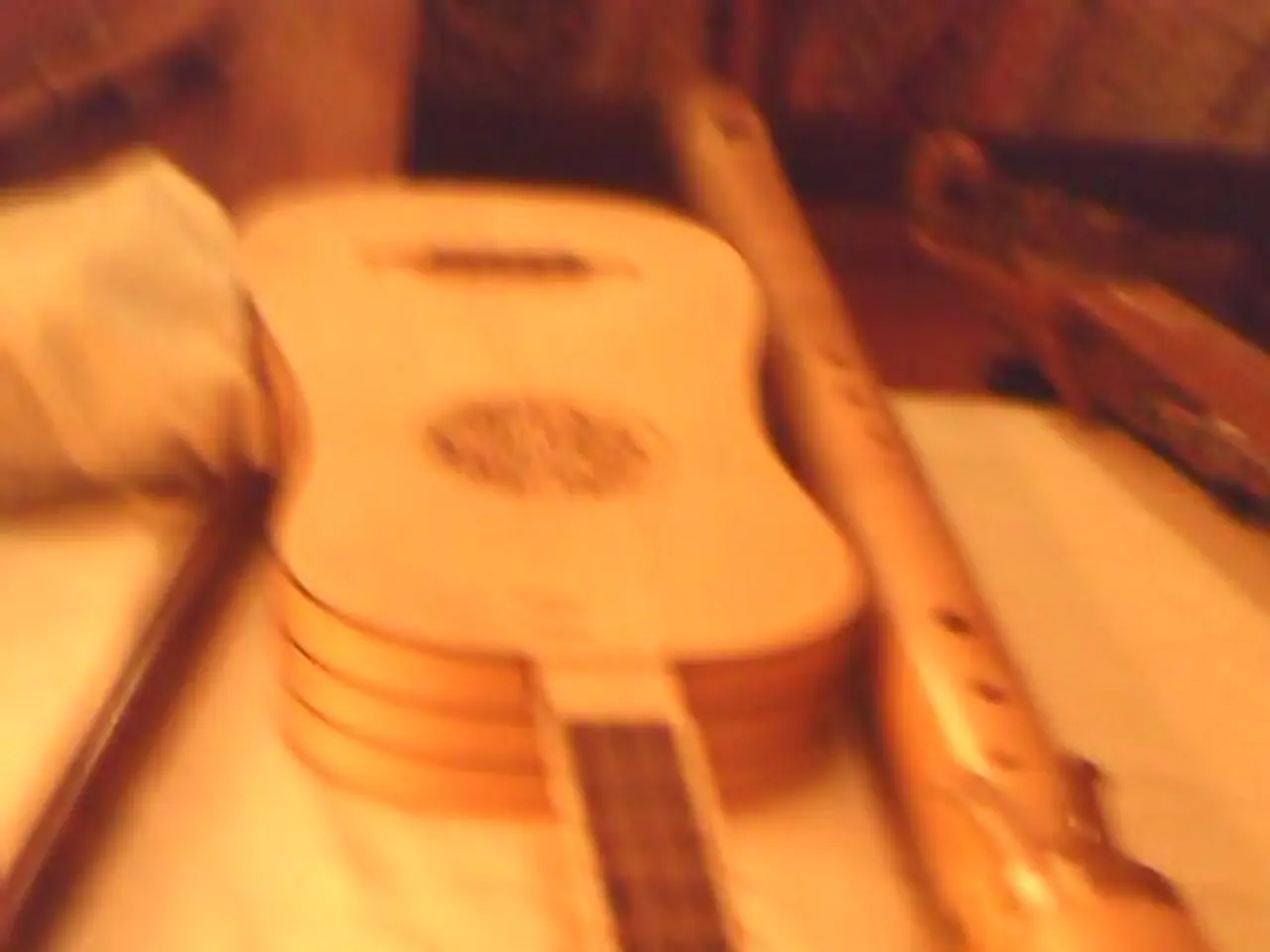Mastering Chords Across the Entire Fretboard on the Guitar: A Guide to the CAGED System
Mastering the Guitar Fretboard with the CAGED System
The CAGED system is a popular and effective method for guitarists to navigate the fretboard in a structured and intuitive way. This system uses five basic open chord shapes - C, A, G, E, and D - as the foundation for understanding the guitar's layout[1][5].
The CAGED system offers several benefits for improving playing and fretboard knowledge:
- Five Anchor Points: The system provides five anchor points (the chord shapes) that repeat up the neck, creating a framework to find chord tones anywhere on the fretboard[5].
- Understanding Root, Third, and Fifth Notes: By understanding the root, third, and fifth notes within each shape, building chords and scales becomes more intuitive[1].
- Fluid Navigation: The CAGED system allows players to navigate the fretboard fluidly, connecting different positions so you can play chord progressions or scales seamlessly in any key[4].
- Chord and Scale Integration: The system helps visualize duplicates of the same chord in various positions, enhancing fretboard familiarity and versatility[2].
- Improved Improvisation: The CAGED system makes improvisation and soloing easier by directly relating notes to chord forms[3][4].
The diagrams in this article will show the open chord at the top of the neck and the corresponding CAGED chord that makes a C chord on the neck. For example, an open C chord and 'C form' barre chord at the 12th fret make a C chord in pitch[1]. Similarly, an open E chord and 'E form' barre chord at the 8th fret sound like a C chord[6].
Each of these chord shapes is paired with a unique major scale pattern. The 'D' scale pattern uses one finger per fret in the 10th position, except for the D and G strings, which shift back to the 9th fret[7]. The 'A' form scale pattern has a highlighted 'A form' barre chord shape and shifts up one fret on the second string[8]. The 'E' scale pattern is easy to play with one finger per fret and no position shifts required[9].
The 'G' scale pattern uses one finger per fret until the third string, which shifts back one fret (to the 4th fret), and then resumes the 5th position for the remainder[10]. To play these scale patterns in a different key, locate the root notes in the desired pattern and move the scale up or down the fretboard until the root notes are parked on the new key[11].
The open G chord and subsequent G form barre chord at the 5th fret result in a C chord in sound[6]. The open A chord and 'A form' barre chord at the 3rd fret make a C chord in pitch[12].
Practicing and memorizing where the chord tones are in each pattern as possible resolving points will help bring your soloing to life and make it sound more musical[13]. Learning the scale patterns and the chord tones that exist in each pattern is essential for mastering the fretboard[14].
In summary, the CAGED system is a practical tool for guitarists to gain comprehensive fretboard knowledge, build chord vocabulary, and improve playing technique by understanding how standard chord shapes interlock across the neck. The term CAGED is a mnemonic device for simplifying the layout of the guitar fingerboard[15].
[1] https://www.guitarworld.com/lessons/the-caged-system-guitar-scale-patterns [2] https://www.guitarworld.com/lessons/the-caged-system-guitar-chords [3] https://www.justinguitar.com/en/GC-100-The-CAGED-System-for-Guitar.php [4] https://www.musicradar.com/news/guitars/the-caged-system-how-to-master-the-guitar-fretboard-1384768 [5] https://www.guitartricks.com/articles/the-caged-system-explained/ [6] https://www.musicradar.com/news/guitars/the-caged-system-how-to-master-the-guitar-fretboard-1384768 [7] https://www.guitarworld.com/lessons/the-caged-system-guitar-scale-patterns [8] https://www.guitarworld.com/lessons/the-caged-system-guitar-scale-patterns [9] https://www.guitarworld.com/lessons/the-caged-system-guitar-scale-patterns [10] https://www.guitarworld.com/lessons/the-caged-system-guitar-scale-patterns [11] https://www.guitarworld.com/lessons/the-caged-system-guitar-scale-patterns [12] https://www.musicradar.com/news/guitars/the-caged-system-how-to-master-the-guitar-fretboard-1384768 [13] https://www.musicradar.com/news/guitars/the-caged-system-how-to-master-the-guitar-fretboard-1384768 [14] https://www.guitarworld.com/lessons/the-caged-system-guitar-scale-patterns [15] https://www.guitarworld.com/lessons/the-caged-system-guitar-chords
The CAGED system, as an education-and-self-development tool, aids in learning the music distribution of scales and chords on a guitar's fretboard, enabling more fluid navigation and seamless transition between different positions. Mastering the unique scale patterns associated with each CAGED shape is crucial for a comprehensive fretboard knowledge, fostering improved improvisation and soloing.




